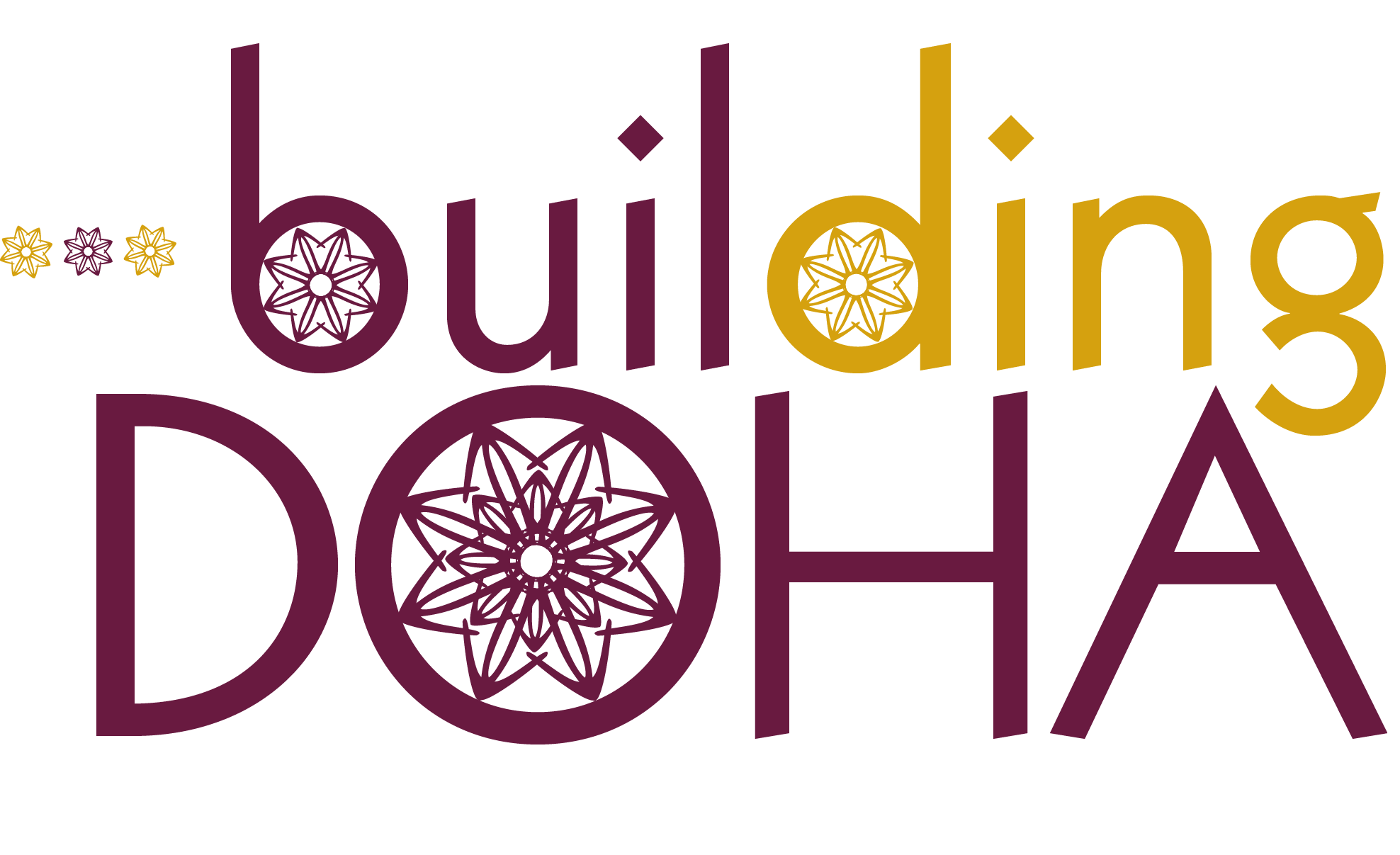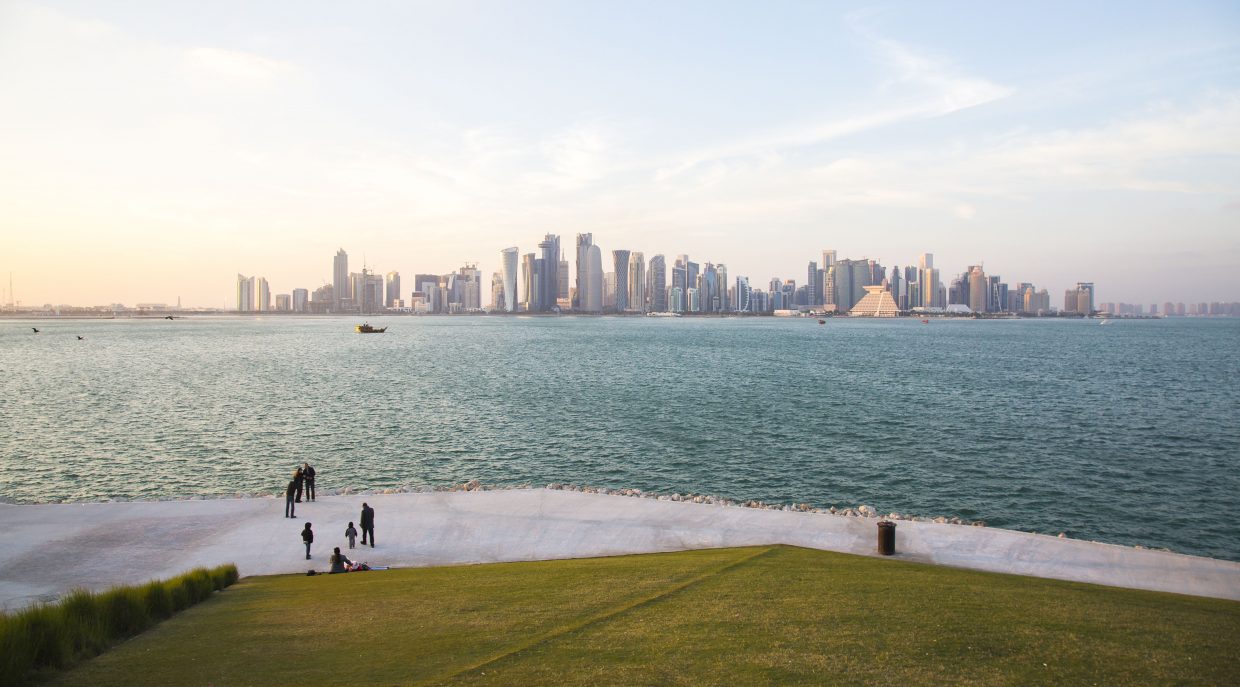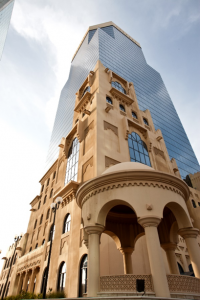As Qatar attempts to balance its traditional roots with modernity, the country’s architecture is developing its own language.
By: Meher Mehtab
As you catch the first glimpse of Doha from hundreds of miles above the ground, a cluster of tall glass buildings cornering a body of water emerges out of the clouds. The first impression of Doha then is that of a fast-paced metropolitan city, perhaps even one rivaling the most advanced cities in the world.
But once on the ground and in the midst of the high-rise towers that make up the West Bay area skyline, you can see that each building has a different story to tell with its intricate and unique design.
In 2014, Bob Simon, an American TV correspondent for CBS News, visited Doha. Later on his news magazine show 60 Minutes, he described the West Bay skyline as looking as if it was designed by architects who “didn’t talk to each other, didn’t like each other and engaged in experiments they could never get away with at home.”
Regardless of whether this may or may not be true, the reality is that each building in West Bay has a story to tell. The four most innovative and conspicuous structures that immediately catch the eye are Doha Tower, Tornado Tower, Palm Tower and Al Bidda Tower. Doha Tower, also known as the Burj Qatar, is one of the city’s most iconic buildings. Its cladding is meant to mimic the traditional Islamic “mashrabiya,” or artistic screen used for shading or dividing a room.
Gray by the day and orange by the night due to the building’s LED light display, this tall cylindrical structure has won awards for its innovative design, such as the CTBUH Skyscraper Award for the Best Tall Building Worldwide from the Council on Tall Buildings and Urban Habitat in 2012. The design of this building also echoes the design and shape of bird towers built of mud and clay that still exist in parts of Qatar.
Likewise, Palm Tower is a symbol of the country’s cultural heritage as well. With glass box-like angled protrusions down the sides of this hexagonal structure, the design resembles the angular built of a palm tree, which are native to the region.
In contrast, the other two towers, are more modern in design and do not have a clear connection to Qatari heritage. The Tornado Tower, which, as its name suggests, is meant to resemble a tornado, has been touted for its unique yet simple design. The tower tapers inward at the mid-point and then outwards again at its highest point. Lastly, on the extreme left of the skyline is the Al Bidda Tower. Built in a twisting fashion, similar to the Cayan Towers in Dubai, the rounded triangular-shaped base spirals in the middle before flattening at the top of the tower.
Within the last four decades, Doha has changed its face from a pearl and fishing village to a modern metropolis with innovative and futuristic architecture. Before then, Qatar’s traditional architecture consisted of low-rise, spacious courtyard houses. Then slowly, around the late 1960s, mid-rise buildings began to be constructed. When the country’s wealth grew and businesses began to establish themselves in Doha after the 1980s, the demand for and construction of high-rises increased, especially in the West Bay area.
In the early stages of Doha’s development, it was a challenge for both local and foreign architects to reflect the identity and heritage of the country and balance it with the functional, climatic and sustainable demands of massive-scale buildings. However, now with a greater focus on preservation of identity, Qatar, and the Gulf region in general, is witnessing the birth of distinguished and unique Arab architecture. The West Bay skyline alone is an example of the eclectic styles of architecture found all over Doha, whether in residential buildings or in the more modern high-rises.
According to Ibrahim Jaidah, CEO and chief architect at the Arab Engineering Bureau, architecture and construction in Doha started deviating from traditional Arab motifs once oil was discovered in the region in the late 1930s and the country grew wealthier in subsequent decades. At the same time, an influx of foreign designers and architects into the country brought with them new and innovative ideas that went further and further away from the country’s traditional style. Local fascination for foreign architecture grew as well. In the 1970s and 1980s, European style balconies started appearing more in traditional Qatari courtyard houses and more floors were added to mid-rise buildings.
In recent years, however, construction in Qatar has witnessed the comeback of traditional motifs and designs as Qatar moves towards a greater embrace of its national identity.
“If we go back to history, we have to use what are the references [for Qatar’s architectural identity] and the main most important reference is the old National Museum, handful of forts around Qatar, and few buildings that are preserved from the old era – these are the references used,” Jaidah said.
Alexandre Amato, head of sustainability at the Qatar Green Building Council, said Qatar in the 1930s and 1940s, besides its forts and a handful of government buildings, did not have many buildings of its own to refer to for architectural projects. As a result, motifs from other parts of the Middle East and even India were used to decorate and design new construction projects. These influences traveled across vast distances as trading developed between Qatar and other areas.
According to Jaidah, there are some obvious elemental differences between the local architectural vernacular of Qatar and other buildings across the Gulf. While these buildings generally look the same to the non-expert, there are elements unique to each building stemming from its geographical location and, as a result, the material used to design and construct it. For instance, locally-sourced limestone and recessed arches as ornamental motifs are specific to Qatar. However, foreign influences from the West in particular have crept slowly into Qatar’s architecture as the country has pushed for the construction of more high-rise buildings.
“Where the Western style is perhaps the most obvious is for [Doha’s] tall buildings, which we would say high-rise because, actually, this is a completely a new form that the world did not see until really the latter half of the 20th century. So for most places it is a new building style,” Amato said.
The usual conjecture around Doha’s high-rises is that these buildings, in both their design and planning, are ignorant of local climatic issues and even the country’s heritage and cultural values. For example, many high-rise buildings in Doha could use shading devices in order to provide relief from the hot desert sun, according to Yasser Mahgoub, former head of the architecture and urban planning department at Qatar University. Consideration of building orientation is also essential, he added. The material used on the exterior of a building can be adversely affected because of the city’s harsh climate, and if a building directly faces the sun for the most of the day, it will be more difficult to regulate the temperature inside.
“The problem is not with construction companies – they do what asked to do. The problem is with designs and designers not understanding what is required. [Unlike] what you might find in traditional architecture [referring to Souq Waqif]. They lived among people, they understood the environment and culture and knew what kind of wants and needs and wishes they had and tried to satisfy them,” Mahgoub said.
However, modern Qatari architects are trying to incorporate local needs and motifs into high-rise structures, such as Jaidah, who said he wants to develop and preserve an Arab architectural identity.
“It terms of putting identity into this, it’s a challenge,” Jaidah said. “You put some features, some patterns but you cannot make a high skyscraper look very Arabic. There have been some attempts where it gives a sense of belonging.” Jaidah took on this challenge when he designed the Barzan Tower in West Bay, which was completed in 1998. The 22-story high-rise building is a creative union of traditional style with modern concepts. The decorative concrete arches at the bottom pave way for a futuristic glass high-rise that emerges out of it, giving a flavor of both Qatar’s past and future.
He added that identity is not necessarily restricted to the way buildings look. It is also imperative to include traditional elements in the way that they function, such as creating courtyards and considering building orientation vis-à-vis the sun. These are basic elements, he said, that were passed down to later generations by those who lived in Qatar in much harder times without technology. He referred to these individuals as the “old builders:” designers and architects who existed in early Doha before oil was discovered and understood the demands of this region’s climate and culture. Jaidah said his generation of architects, who began to emerge in the 1990s, were able to give Qatar’s architecture a “kickstart” from the country’s previous halt in the building of traditional-style buildings. However, he also cautioned that as the country begins to re-embrace traditional design and functionality, modern architects, both local and foreign, might make some mistakes as they experiment with trying to include elements of the local vernacular into the massive high-rise style.
Structures such as the Sharq Village and Spa and the Al-Rayyan Municipality building are designed according to traditional elements, even though the functions of these buildings (such as operating as a modern hotel and spa) are not traditional, Jaidah said. Another project that blends contemporary functionality with local aesthetic identity is Msheireb Downtown Doha, a sustainable regeneration project that plans to preserve Doha’s old downtown commercial district and its structures, but also enhance them by adding architectural flourishes inspired by Qatari heritage. This project would set a new standard and give Qatari architecture its own vocabulary, Jaidah said.
However, with the rise in the number of foreign architects present in Qatar, it is often speculated if the essence of Arab and Gulf architecture is lost. Franz Reyes, the green building coordinator at Qatar Green Leaders, a building design management company, said that doesn’t seem to be a concern among her Qatari clients. Young Qataris are more interested in experimenting with their houses whereas older clients tend to follow the traditional style of a courtyard house, she said. Reyes added that residential architecture in Qatar requires sensitivity to three particular elements: space, religion and exterior color. Residential spaces are much more massive in Doha as compared to European or American homes, and they require a considerable level of privacy due to cultural values based on Islamic notions of modesty. Therefore, she said it is imperative for architects like herself to be sensitive to these demands even though they are different to those of where she comes from.
The trend of including modern motifs and designs is not just limited to high-rise towers; residential areas have also witnessed a transition. Local Qataris are now more inclined towards including components of modern foreign architecture in their houses even if that means stepping away from Qatar’s cultural norms and values.
Yousuf Zainel, a retired ministry official, is building a new house from scratch. The house is designed in a more modern, foreign-influenced way because he said he wants to provide his family members with more individual privacy.
“Nowadays, the modern architecture secludes some members of the family. For example, the parents will sit in the living room downstairs and the children will be upstairs. There is no sense of a shared space that came with traditional [Qatari] houses. So, in a sense, modern, more foreign influenced architecture can be progressive in terms of having more space, but it changes the dynamics of the family and culture,” Zainel said.
As Qatar looks onward to greater possibilities for the nation, what is apparent is that the country is trying to blend modern architecture with the country’s heritage and traditional aesthetics. Designers are including decorative elements from the past in their complex modern structures. Nevertheless, the popularity of foreign designs may impact the country and its people in unexpected ways. Only the future will show whether Qatar will be able to successfully merge its past with its future.



